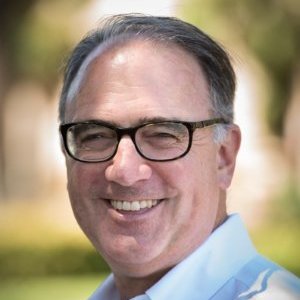Bob Webster, who is a Managing Director of Impact Investing Strategy at SEAF sat down for a short talk with Christopher Skroupa who runs Skytop Strategies.
Mr. Webster is a 20-year veteran in impact investing and helps manage for SEAF how impact is baked into SEAF’s processes and inventory of funds. He also runs the SEAF Women’s Opportunity Fund, focusing investments on SMEs in Indonesia, the Philippines, and Vietnam.
Webster's BackgroundPrior to SEAF, Bob was COO for the Grassroots Business Fund, a leading impact investment fund focused on emerging markets in Asia, Kenya and Peru. He is an active trainer in impact investing for the GIIN, ANDE and Harvard Business School’s Impact Club. He also serves as mentor for the social enterprise accelerator at Santa Clara University.
Bob holds both an MBA in Finance and a BA in Mathematics from Indiana University. He also completed Harvard University’s Financial Institutions for Private Enterprise Development Executive Program (FIPED) at the Kennedy School, and he has completed post-graduate work in agricultural economics at the University of London.
Interview Highlights
Skroupa: How do you see the impact investing field evolving over the next five years?
Webster: We all see more mainstream capital interested in social and environmental impact. Millennials are pushing family office portfolios in this direction and foundations are increasingly “putting their money where their mouth is,” using core endowment funds for impact investing. Perhaps surprisingly, given their high fiduciary responsibility, pension funds are increasingly looking at this space.
This obviously represents a great opportunity for impact investing fund managers, but it also raises some interesting questions as the space moves forward. It is critical in the private equity space that committed capital for impact does not overly exceed the demand in the market. Particularly in public securities, investors should be wary of offerings that are marketed as impact but in essence are not.
Another trend is the coalescing of impact capital around certain impact themes or sectors, such as quality job creation, environmental sustainability, agribusiness or even gender.
On gender, SEAF has seen a great deal of interest in this based on social media metrics, interest from co-investors, and hearing in the marketplace about potential fund-of-funds focusing on women entrepreneurs. Clean energy is of clear interest to mainstream investors as sustainable sources of energy such as wind and solar become increasingly economically competitive with oil and gas.
Finally, some interesting questions on impact investing will perhaps be answered over the next five years. Will impact investment fund managers go full bore on impact, establishing clear impact achievement thresholds, alongside financial return thresholds, for investment decision-making? Some managers do have minimum impact requirements for making investment decisions, while others have do not or have impact achievement guides. Some fund managers feel they do not yet have enough experience and data to establish firm impact decision-making thresholds.
Conversely, will there actually be a push back on impact metrics themselves, as occasionally there are informed voices that question if the insistence on full rigor on impact management can cause investors to lose sight of the real impact being achieved and hence be counterproductive?
Perhaps more importantly, what will another five years of data tell us about these questions, such as the possible tradeoff between financial returns and impact, the suitability of impact metrics and thresholds, and what impact themes, sectors and/or geographies and asset classes will be of most interest to investors?
***
Source: Forbes








